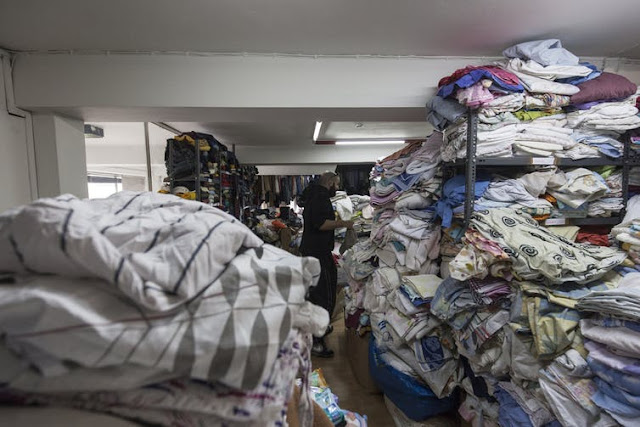Among the greatest difficulties to catastrophe alleviation is sychronisation. After catastrophe strikes, instant requirements (food, sprinkle, medicine, coverings) are essential, however what is the very best method to provide them?
We frequently really feel obliged to contribute our very own clothes and various other products. Sadly, putting contributed products right into a ravaged area could sluggish alleviation initiatives. The influx could trigger what numerous call "the 2nd catastrophe", overloading alleviation employees with additional obligations and using up valuable area.
Sometimes, product contributions likewise produce squander. When footwears are sent out to areas where individuals don't use footwears, for instance, the hold nation might wind up spending for their disposal. Or when maize is sent out to areas where individuals depend mainly on milk and meat, it could result in much a lot extra alcohol being distilled.
After that there are the knock-on impacts of charms for unexpected huge emergency situations. A heartfelt outpouring could damage various other charitable efforts by redirecting limited funds. In challenging times also the very best people need to reduce our payments. The 2007 recession, for instance, strike US charitable providing which really did not recover up till 2014. In a time of contribution scarcity, enhancing contributions to a catastrophe location could take funds far from various other efforts that may have the ability to utilize it much far better.
Great sychronisation, on the various other hand, allows one of the most effective use contributed cash. For instance, Juanita Rilling, supervisor of the Centre for Worldwide Catastrophe Info, determined the set you back of providing sprinkle to 40,000 individuals a day. It leapt from US$500 (if bought in your area by alleviation coordinators) to anywhere from US$200,000 to US$750,000 when bought abroad and delivered in – a boost of 400%-1500%. Cara Sapu Bersih Taruhan Bola Online

In 2015, the globe dealt with quakes in Main Australia or europe, swamping in South-East Australia or europe, and epidemic diseases partially of Africa. With each other, all-natural and manufactured catastrophes took greater than 31,000 lives. Individuals around the world contributed greater than US$19 billion in altruistic payments of money, product products, and solutions to reduce the damage triggered by these crucial occasions – however were our initiatives are well invested?
Almost everyone are cumulative donors in some feeling – when federal governments send out alleviation to catastrophe locations, the cash they utilize originates from taxpayers. Numerous people are likewise private donors, sending out funds straight from our very own purses to charitable organisations and collaborated charms. However in the previous 10 to 15 years, allegations of detrimental alleviation initiatives and extra contributions have produced issue amongst donors – not just since cash may be misspent or trigger damage however likewise since this this may likewise dissuade charitable providing.
These issues are not unfounded; massive worldwide catastrophe alleviation could have disadvantages that vary from squandering sources to seriously weakening regional federal governments. Right below are 5 prospective issues.





